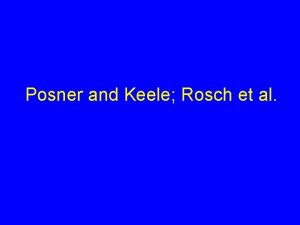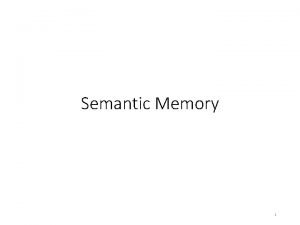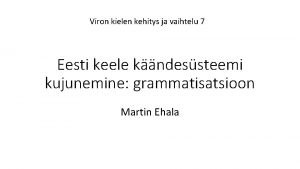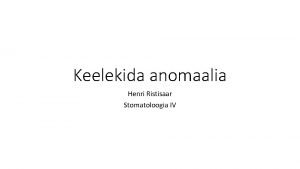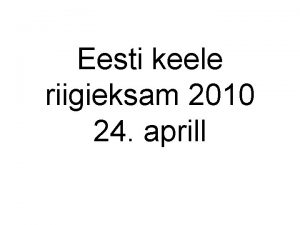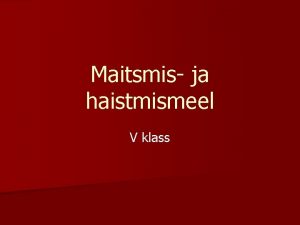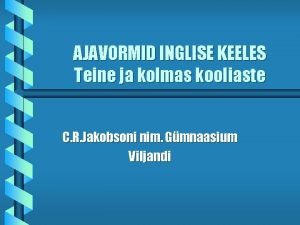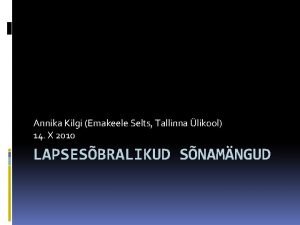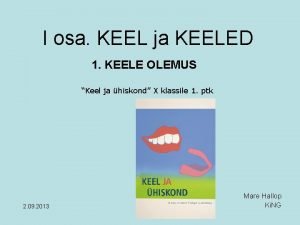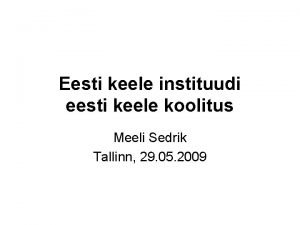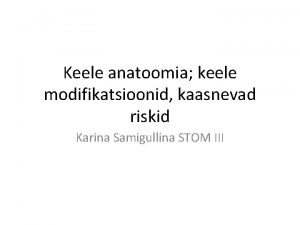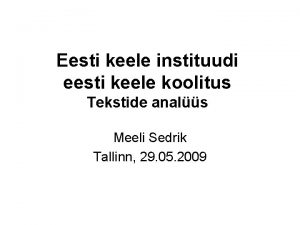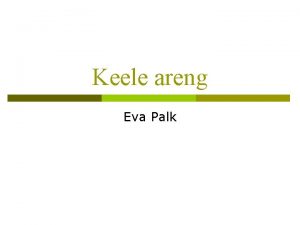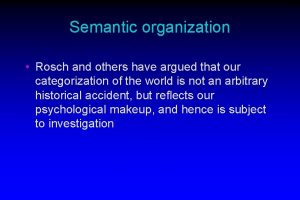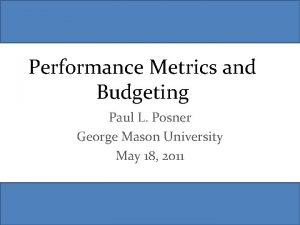Posner and Keele Rosch et al Posner and













- Slides: 13

Posner and Keele; Rosch et al.

Posner and Keele: Two Main Points • Greatest generalization is to prototype. – Given noisy examples of prototype, prototype is as well classified as examples. • Prototype isn’t only thing learned. – Amount of variability in training examples influences representations.

How the Experiments Work • • Generate prototype. Then distortions. Train subject to know one level of distortions. Judge ability to classify – – Training set. More distorted ones Equally distorted but different. Prototypes. Matlab

From Palmeri and Flanery

http: //www. msu. edu/course/psy/200/Burns/p 200 f 030916_6. pdf

Conclusions of Experiment 3 • Train on distorted images. • Performance as good on prototype as training set. • Worse on less distorted images, of equal avg. distance to training set as prototype. • Even worse on new of equal distortion as training set. Representation favors prototypes.

Conclusions of Experiment 1&2 • Train on a) less or b) more distorted versions. • Test on even more distorted. • Better if you trained on more distorted. Representation is more than prototypes.

Questions • What is learned? – Prototype? • Not just prototype. • Examples plus prototype. – Distribution? • Gaussian? • Seems like examples mattered. Could distribution overfit the data? – Examples + Weighted distances.

• Is this domain sufficiently realistic? – Are dots just dots? • Maybe shape is important. This might mean forming links between dots, which noise disrupts. Perhaps exps 1&2 have more to do with set of shapes learned than variance in features. – If real categories have structure, does this domain have too little structure?

Rosch • Categories are in the world. – Objects have structure, correlations of attributes. • Basic categories are those with greatest cue validity. – Cue predicts category. – Superordinates don’t have many attributes in common. – Subordinates share many attributes with other subordinates. – Why cue validity?

Experiments 1 -4 • Main points – Categories have shared properties – Basic categories are where most of these first appear. • Experiments 1. Collect attribute lists. • Example: # common attributes for fruit: superordinate – 3, basic – 8. 3, subordinate – 9. 5 2. Document actions with objects. • Similar pattern of attributes. 3. Similarity of shape. 4. Average shape. • Basic categories have similar shape; no evidence subordinates are less similar.

Experiments 5 -12 • Main point – • Basic categories are psychologically real. Experiments 5 & 6 Prime with category name then compare/detect with quick exposure. 7 Category name is query compared to image, not prime. 1. 1 st task where performance is best for basic categories. 8 & 9 Children sort into basic categories earlier. 10 People name with basic categories. 11 Children learn these words first. 12 ASL is missing many subordinate and superordinate words.

Conclusions • Is this belaboring the obvious? – Well, it wasn’t obvious. – Convergence of evidence more convincing? • Categorization is for inference. – This seems like a very modern view. • Different kinds of attributes common at basic level. – This is what makes visual classification possible (if true). • Are categories completely in the world? – May depend on extent of knowledge. – Context.
 Posner and keele
Posner and keele Rosh hashanah wikipedia
Rosh hashanah wikipedia Semantic memory
Semantic memory Kouzes and posner transformational leadership
Kouzes and posner transformational leadership Sisekohakäänded
Sisekohakäänded Keelekida operatsioon
Keelekida operatsioon Tegusõna pöördelised vormid
Tegusõna pöördelised vormid Eesti keele riigieksamiks valmistumine
Eesti keele riigieksamiks valmistumine Haistmismeel
Haistmismeel Teine kooliaste
Teine kooliaste Sotsioperiood
Sotsioperiood Eesti keele õppemängud lasteaias
Eesti keele õppemängud lasteaias Keel ja ühiskond
Keel ja ühiskond Small basic code examples
Small basic code examples
